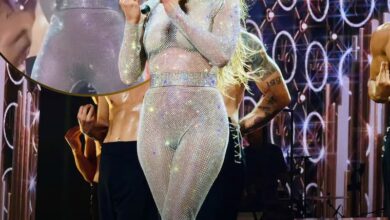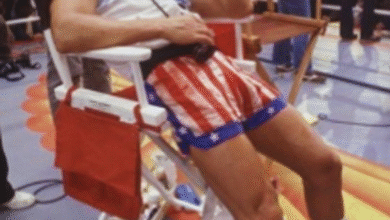How One Song and a Pink Gown Sealed Marilyn Monroe’s Hollywood Icon Status
OPINION: This article may contain commentary which reflects the author's opinion.
Marilyn Monroe’s performance as Lorelei Lee in the 1953 classic Gentlemen Prefer Blondes remains one of the most iconic moments in Hollywood history. Her dazzling rendition of “Diamonds Are a Girl’s Best Friend” not only captivated audiences but also cemented her legacy as a cultural and cinematic legend.
Monroe brought to life Lorelei Lee—a charming, diamond-loving showgirl—originally created by Anita Loos in her 1925 novel and later adapted for Broadway. Far from a mere caricature of the “dumb blonde,” Monroe infused Lorelei with a layered blend of naive charm and sharp wit. Her chemistry with co-star Jane Russell’s Dorothy Shaw added depth to the story, highlighting a rare portrayal of female friendship and solidarity in 1950s cinema.
Directed by Howard Hawks, the film’s standout moment was Monroe’s musical number, where she wore the now-iconic pink gown designed by Travilla. The performance showcased her playful comedic timing and singing ability, with the American Film Institute ranking “Diamonds Are a Girl’s Best Friend” as the 12th greatest song in American movie history.
Critics praised Monroe’s work, with Gentlemen Prefer Blondes holding an 88% approval rating on Rotten Tomatoes. Anita Loos herself famously commented, “I did not write the role Lorelei Lee as Marilyn performed it in the film, but I sure as hell wish I had!” This praise underscores how Monroe transformed the role into something unforgettable.
The film was a commercial success, ranking seventh in box office grosses in 1953, but its impact extended beyond numbers. It broke new ground by portraying female friendships with warmth and nuance—a dynamic rarely seen in Hollywood at the time. This friendship helped Monroe weather the industry’s pressures and contributed to her rise.
From a modest $500 weekly salary, Monroe’s success in the film propelled her to renegotiate her contract in 1954 for $100,000 per film and creative control—a milestone that firmly established her as Hollywood royalty.
Behind the glamour, Monroe’s insecurities were well-known, yet her bond with Jane Russell—who affectionately nicknamed her “Blondles”—offered comfort and support. Together, they graced the cover of Life magazine and left their handprints at Grauman’s Chinese Theatre, symbolizing their ascent as stars.
Marilyn Monroe’s pink gown moment and the unforgettable “Diamonds” performance weren’t just career highlights—they were defining chapters that forged her enduring image as Hollywood’s quintessential icon. Decades later, the sparkle of that performance still shines brightly in cinematic history.



